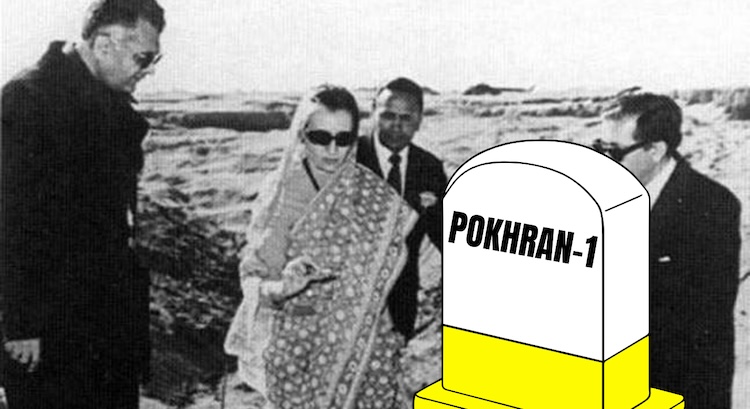By Ashish Kumar Singh*
NEW DELHI | 18 May 2024 (IDN) — On this day in 1974, India conducted its landmark first nuclear tests in Pokhran, Rajasthan, as part of the ‘Smiling Buddha’ operation. Until it actually happened, secrecy surrounded the event, as many major world powers at the time attempted to restrict the proliferation of states with nuclear weapons.
Then Prime Minister Indira Gandhi termed the event a “peaceful nuclear explosion”, perhaps to assuage the rest of the world and particularly the members of the United Nations Security Council’s permanent five (or P-5) members: the United States, the United Kingdom, France, China and Russia. What exactly was their opposition, and what was India’s aim behind the test? We explain.
Why Did India Decide To Go For Nuclear Tests?
India chose to conduct nuclear tests for several reasons. India perceived the NPT as unfairly favouring nuclear states over non-nuclear ones like itself, prompting it to conduct independent nuclear tests.
Apart from this, Indian scientists, including Homi J Bhabha and Vikram Sarabhai, laid the groundwork for nuclear energy within India, leading to the establishment of the Department of Atomic Energy (DAE) in 1954.
Shift in Leadership and Geopolitical Climate: Changes in leadership after the 1960s, combined with tensions with China and Pakistan, influenced India’s pursuit of nuclear capabilities. China’s nuclear tests in 1964 also contributed to this decision.
How Did Pokhran-1 Test Happen?
India conducted its 1974 nuclear test at Pokhran without prior announcement, amidst internal uncertainty among key decision-makers. Prime Minister Indira Gandhi approved the test despite opposition from some advisers, demonstrating India’s determination.
The test, known as “Smiling Buddha,” took place on May 18, 1974, at Pokhran in Rajasthan, chosen for its secluded location. The test highlighted India’s nuclear capabilities and its defensive capacity, although immediate weaponization was not pursued. Choosing Buddha Jayanti for the test added symbolic importance.
Raja Ramanna, the architect behind the initiative as Chairman of the Atomic Energy Commission, faced opposition from two of Indira Gandhi’s key advisors, PN Haksar and PN Dhar, who advocated for postponement. Homi Sethna, the Atomic Energy Commission chairman, remained silent on the matter. D Nag Chaudhuri, the Scientific Adviser to the Defence Minister, began analyzing the pros and cons but was interrupted by the prime minister. “Dr. Ramanna,” she addressed him, “Please proceed. It would benefit the nation. The next morning, the Buddha smiled,” he wrote.
Post-Impression Of Pokhran-1 Test
After successfully conducting the Pokrhan-1 test, India encountered backlash and sanctions from various nations, including the US, following the tests. The US implemented the Nuclear Non-Proliferation Act in 1978, ceasing nuclear assistance to India.
Despite international criticism, India affirmed its status as a nuclear-capable state, laying the groundwork for future endeavours such as Pokhran-II in 1998. India aimed to be recognized as a responsible nuclear power and sought membership in international organizations like the Nuclear Suppliers Group (NSG), encountering opposition from certain countries, particularly China.
India’s nuclear tests represented a significant juncture in its defence and foreign policy, influencing its approach to nuclear matters and its standing in global nuclear diplomacy. [IDN-InDepthNews]
This article was first carried by newsx.com. Original link: https://www.newsx.com/national/50-years-of-pokhran-1-how-did-india-pull-off-its-first-nuclear-bomb-test/
Photo: Prime Minister Indira Gandhi at the sight of Pokhran-1, India’s nuclear test site. Source: newsx.com


